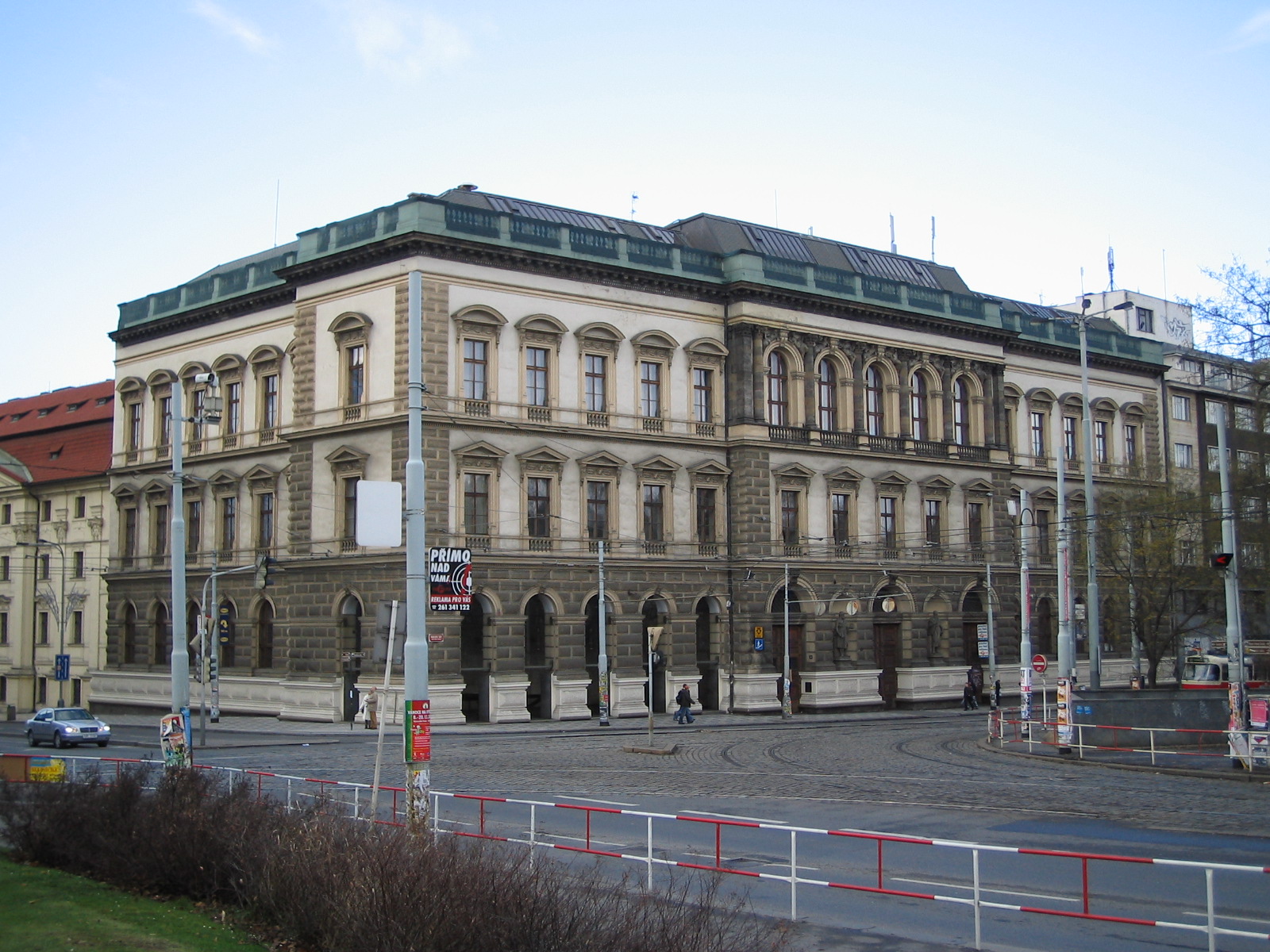|
Vojtěch Ignác Ullmann
Vojtěch Ignác Ullmann (23 April 1822 in Prague – 17 September 1897 in Příbram) was a Czech architect working in Revivalism (architecture), Revivalism architecture, particularly Renaissance Revival architecture. Life Ullmann studied architecture at the Academy of Fine Arts in Vienna with professors August Sicard von Sicardsburg and Eduard van der Nüll. After finishing his studies, he travelled to Italy. From 1854 he worked as an architect in Prague. He often collaborated with the architect Antonín Viktor Barvitius, whose sister he married in 1856. By 1874 he had designed a number of buildings in Prague. Design style In Ullmann's early work we see echoes of medieval stylistic elements (see the Church of Saints Cyril and Methodius (Karlín), Church of Saints Cyril and Methodius in Prague 8 - Karlín). In the next phase of his work, he was significantly influenced by the Viennese renaissance school. Work Prague * Church of Saints Cyril and Methodius (Karlín), Karlínské ... [...More Info...] [...Related Items...] OR: [Wikipedia] [Google] [Baidu] |
Jan Vilímek
Jan Vilímek (; 1 January 1860 – 15 April 1938) was a illustrator and Painting, painter from Boehmia who eventually became a Czechoslovak national. Vilímek was born on 1 January 1860 in Žamberk, Bohemia, Austrian Empire. He created many portraits of famous personalities from Bohemia and other Slavs, Slavic nations. During the 1880s, these portraits were regularly published in magazines such as ''Humoristické listy'', ''Zlatá Praha'' and ''Světozor''. In the 1890s, some of these illustrations were assembled into a book, ''České album''. He died on 15 April 1938 in Vienna. Jan Vilímek - Bedřich Smetana.jpg, Bedřich Smetana Jan Neruda – Jan Vilímek – České album.jpg, Jan Neruda Jan Vilímek - Ignacy Jan Paderewski.jpg, Ignacy Jan Paderewski File:Jan Vilímek - Antonín Dvořák.jpg, Antonín Dvořák External links * :cs:Seznam portrétů Jana Vilímka, List of Vilímek's portraits on Czech Wikipedia (incomplete, sorted by source, with links to digitized ... [...More Info...] [...Related Items...] OR: [Wikipedia] [Google] [Baidu] |
Czech Technical University In Prague
Czech Technical University in Prague (CTU) () is one of the largest universities in the Czech Republic with 8 faculties, and is one of the oldest institutes of technology in Central Europe. It is also the oldest non-military technical university in Europe. In the academic year 2020/21, Czech Technical University offered 130 degree programs in Czech and 84 in English. It was considered one of the top 10 universities in emerging Europe and Central Asia in the same year. History It was established as the Institute of Engineering Education in 1707, but as a secondary education (high school) instead of a tertiary university, by Emperor Joseph I as a response to Christian Josef Willenberg's petition addressed to preceding emperor Leopold I. In 1806, the institute of Engineering Education was transformed into Prague Polytechnical Institute (or Prague Polytechnic), i.e. a school independent of the University of Prague. This was a Europe-wide trend in the early 19th century, as p ... [...More Info...] [...Related Items...] OR: [Wikipedia] [Google] [Baidu] |
19th-century Czech Male Artists
The 19th century began on 1 January 1801 (represented by the Roman numerals MDCCCI), and ended on 31 December 1900 (MCM). It was the 9th century of the 2nd millennium. It was characterized by vast social upheaval. Slavery was abolished in much of Europe and the Americas. The First Industrial Revolution, though it began in the late 18th century, expanded beyond its British homeland for the first time during the 19th century, particularly remaking the economies and societies of the Low Countries, France, the Rhineland, Northern Italy, and the Northeastern United States. A few decades later, the Second Industrial Revolution led to ever more massive urbanization and much higher levels of productivity, profit, and prosperity, a pattern that continued into the 20th century. The Catholic Church, in response to the growing influence and power of modernism, secularism and materialism, formed the First Vatican Council in the late 19th century to deal with such problems and confirm cer ... [...More Info...] [...Related Items...] OR: [Wikipedia] [Google] [Baidu] |
Railway Architects
Rail transport (also known as train transport) is a means of transport using wheeled vehicles running in tracks, which usually consist of two parallel steel rails. Rail transport is one of the two primary means of land transport, next to road transport. It is used for about 8% of passenger and freight transport globally, thanks to its energy efficiency and potentially high speed.Rolling stock on rails generally encounters lower frictional resistance than rubber-tyred road vehicles, allowing rail cars to be coupled into longer trains. Power is usually provided by diesel or electric locomotives. While railway transport is capital-intensive and less flexible than road transport, it can carry heavy loads of passengers and cargo with greater energy efficiency and safety. Precursors of railways driven by human or animal power have existed since antiquity, but modern rail transport began with the invention of the steam locomotive in the United Kingdom at the beginning of the 19th c ... [...More Info...] [...Related Items...] OR: [Wikipedia] [Google] [Baidu] |
Architects From Prague
An architect is a person who plans, designs, and oversees the construction of buildings. To practice architecture means to provide services in connection with the design of buildings and the space within the site surrounding the buildings that have human occupancy or use as their principal purpose. Etymologically, the term architect derives from the Latin , which derives from the Greek (''-'', chief + , builder), i.e., chief builder. The professional requirements for architects vary from location to location. An architect's decisions affect public safety, and thus the architect must undergo specialised training consisting of advanced education and a ''practicum'' (or internship) for practical experience to earn a license to practice architecture. Practical, technical, and academic requirements for becoming an architect vary by jurisdiction though the formal study of architecture in academic institutions has played a pivotal role in the development of the profession. Origins Thr ... [...More Info...] [...Related Items...] OR: [Wikipedia] [Google] [Baidu] |




